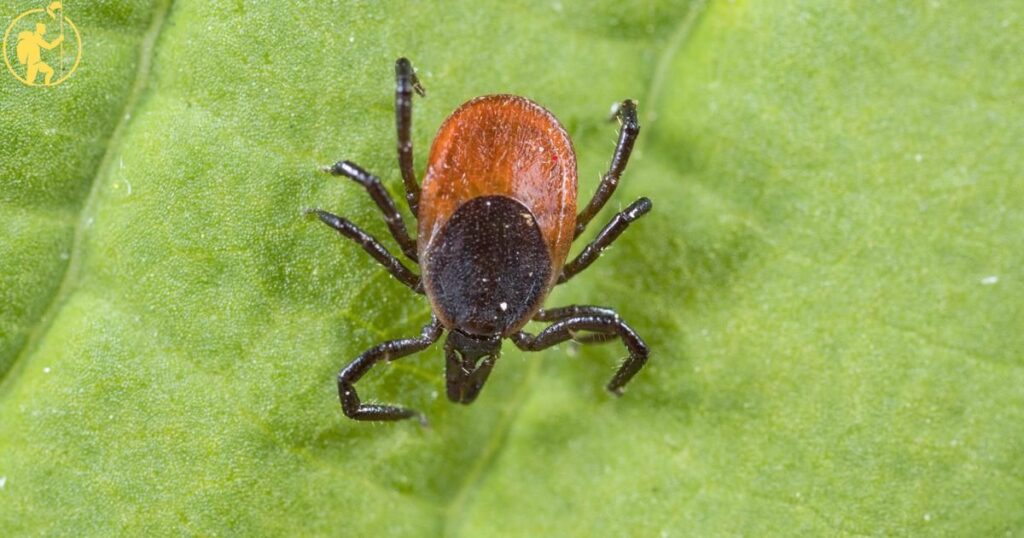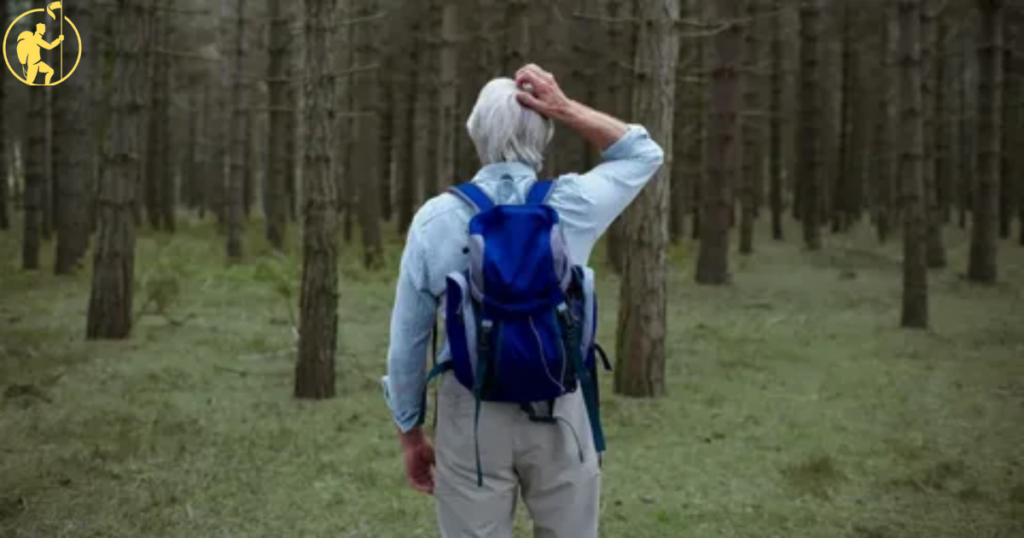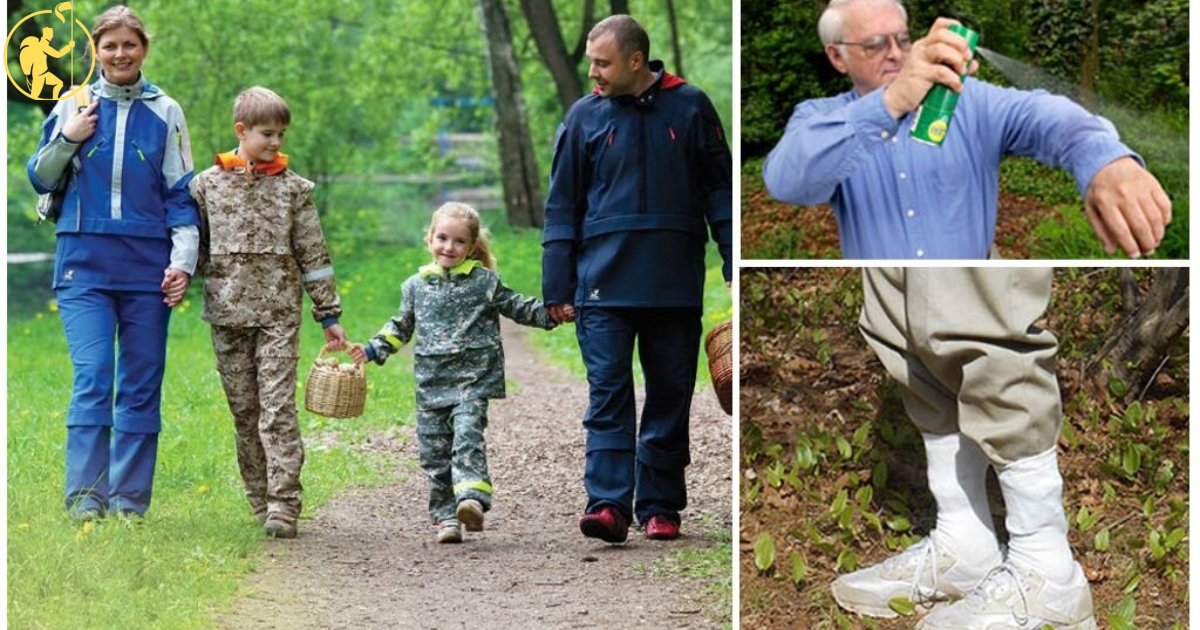Ticks pose a common outdoor challenge, especially for those who enjoy hiking in the USA. These small, blood-sucking arachnids, known vectors of various diseases, make it crucial to understand how to avoid ticks while hiking and exploring nature.
Picture this: you’re immersed in the serene beauty of a hiking trail, but the last thing you want is an encounter with ticks while hiking. In this guide, we’ll delve into effective strategies to navigate the great outdoors without the unwanted company of these tiny yet troublesome creatures.
Discover practical tips and insights on steering clear of ticks during your Avoid Ticks While Hiking adventures. From choosing appropriate clothing to applying repellents, we’ll equip you with the knowledge to enjoy the trails safely and maintain your focus on the beauty of the American outdoors.
How To Avoid Ticks While Hiking Reddit?
Hiking in tick-prone areas? First, wear long sleeves and pants to minimize skin exposure. Applying insect repellent containing DEET can deter ticks effectively.
Additionally, stick to well-trodden paths and avoid tall grassy areas. Check yourself post-hike for any ticks and promptly remove them. Engage in these habits to enjoy a tick-free Avoid Ticks While Hiking experience.
Can Ticks Bite Through Leggings

Ticks pose a potential threat as they can bite through leggings. These tiny arachnids latch onto clothing, and leggings, despite their fabric, may not provide absolute protection. Ticks are persistent, and their small size enables them to navigate through fabric weaves.
Leggings may create a barrier, but ticks can exploit small openings. Tightly woven fabrics are more effective in preventing tick bites. It’s essential to use insect repellents and regularly check for ticks after outdoor activities.
How To Check For Ticks After A Hike?
1. Tick Check Routine:
- After a hike, inspect your body for ticks in warm and hidden areas, and use tips and tricks to remove ticks effectively.
2. Clothing Inspection:
- Check clothing seams, cuffs, and folds for ticks; they may cling to fabric.
3. Shower After Hike:
- Take a shower promptly after the hike to wash off and spot any ticks.
4. Use a Mirror:
- Utilize a mirror to check hard-to-see areas, like the back of your legs or neck.
5. Tick Removal Tools:
- Keep tick removal tools handy and use them properly if you find any attached.
6. Pet Inspection:
- If hiking with pets, inspect them for ticks too, as they can carry them home.
7. High-Risk Areas:
- Pay extra attention to tick-prone areas like wooded and grassy environments.
8. Tick-Repellent Clothing:
- Consider wearing tick-repellent clothing to minimize the risk of tick attachment.
9. Tick-Check Routine for Kids:
- Teach children a routine tick-check after outdoor activities like hiking.
10. Know Tick Habitats:
- Learn about common tick habitats in your region for better prevention.
11. Early Detection is Key:
- Detecting and removing ticks promptly reduces the risk of disease transmission.
12. Consult Healthcare:
- If unsure about tick removal or concerned about symptoms, consult a healthcare professional.
How To Avoid Ticks While Camping?

Ticks can pose a threat to your outdoor adventures, but simple precautions can keep them at bay. First, wear long sleeves and pants, tucking them into your socks to create a barrier against ticks. Additionally, use insect repellent containing DEET on exposed skin to deter these pests. When Avoid Ticks While Hiking or camping, stick to cleared trails and avoid tall grasses where ticks thrive.
After returning from your camping trip, conduct a thorough tick check. Inspect your clothing and body, paying close attention to hidden areas like the armpits and groin. Use a mirror or ask a companion for help in checking hard-to-see spots. If you find a tick, promptly remove it with fine-tipped tweezers, grasping it close to the skin’s surface. Taking these simple steps ensures a safer and tick-free outdoor experience.
How To Keep Ticks Off You When Hiking
Hiking in tick-prone areas? Wear long sleeves, pants, and closed shoes.
Apply insect repellent on exposed skin, focusing on ankles and wrists.
Regularly check for ticks during breaks; swift removal prevents potential bites.
Choose trails wisely, avoiding dense vegetation and tall grasses where ticks thrive.
After hiking, shower and change into clean clothes to remove any hitchhiking ticks.
By taking these precautions, you can enjoy your hike tick-free.
Tick Country

Tick Country refers to regions where ticks thrive and pose health risks. Ticks are small arachnids that feed on blood, often transmitting diseases to humans and animals. In Tick Country, precautions like wearing protective clothing and using repellents are crucial.
In Tick Country, Lyme disease and other tick-borne illnesses are prevalent. Symptoms range from fever to joint pain, emphasizing the importance of awareness and prevention. Understanding the risks in Tick Country helps communities adopt effective strategies for staying safe.
Best Tick Repellent
- DEET Formulas: The best tick repellents often contain DEET, a potent chemical proven effective against ticks.
- Picardie Options: Consider tick repellents with Picardie as a safer alternative to DEET, equally effective against ticks.
- Natural Oil Blends: Some of the best tick repellents use natural oils like citronella, eucalyptus, and tea tree oil to ward off ticks.
- Long-Lasting Protection: Look for products offering extended protection to ensure you stay tick-free for longer periods.
- Clothing Treatment: Explore tick repellents designed for clothing treatment, providing an additional layer of defense against ticks.
- Kid-Friendly Solutions: Opt for tick repellents specially formulated for children to keep them protected during outdoor activities.
- Water-Resistant Formulas: Choose tick repellents that are water-resistant to maintain effectiveness even during activities like swimming or sweating.
- CDC Recommended: Check for repellents recommended by the Centers for Disease Control and Prevention (CDC) for reliable tick protection.
- Spray Application: Convenient spray application makes it easy to cover exposed skin and clothing for comprehensive tick prevention.
- Odorless Options: Consider odorless tick repellents for a discreet and effective way to keep ticks at bay during outdoor adventures.
What Is Hikers Disease?

Hiker’s disease, also known as giardiasis, is a common outdoor concern. This waterborne illness stems from a microscopic parasite, Giardia lamblia. When hikers consume contaminated water, they risk contracting this gastrointestinal infection. Symptoms include stomach cramps, diarrhea, and nausea.
To prevent hiker’s disease, hikers should purify water before consumption, such as boiling, filtering, or using water purification tablets. Can You Bring Hiking Poles On A Plane? If symptoms arise, seeking medical attention promptly ensures proper treatment and recovery.
How To Keep Ticks Off Dogs While Hiking?
Ticks can pose a threat to your furry companion while Avoid Ticks While Hiking. To keep ticks off dogs, consider using tick prevention products such as tick collars or spot-on treatments recommended by your vet. Additionally, grooming your dog regularly during and after the hike helps detect and remove ticks promptly.
Choose well-maintained trails and avoid dense vegetation where ticks thrive. Dress your dog in light-colored clothing to make ticks more visible. Before returning home, thoroughly check your dog for ticks, paying close attention to ears, neck, and paws. Taking these precautions ensures a tick-free hiking experience for your canine friend.
Become An Ontario Hiking Supporter!

Embark on a journey of support for Ontario hiking by becoming a Hiking Supporter! Your commitment helps preserve trails and promotes outdoor enjoyment. As a supporter, you contribute to the maintenance and enhancement of hiking experiences across the province.
Enjoy exclusive perks such as early access to trail events, informative newsletters, and a sense of pride in fostering a vibrant Avoid Ticks While Hiking community. Join us in preserving Ontario’s natural beauty for current and future generations. Sign up today and be a vital part of the Ontario Hiking Supporter community!
What are the Types of Ticks in Ontario?
1. Black-legged Tick (Deer Tick)
- Found in Ontario.
- Carries Lyme disease.
2. American Dog Tick:
- Common in grassy areas.
- Can transmit Rocky Mountain spotted fever.
3. Brown Dog Tick:
- Often found indoors.
- Prefers feeding on dogs.
4. Lone Star Tick:
- Distinctive white spot on females.
- Linked to ehrlichiosis and southern tick-associated rash illness (STARI).
5. Groundhog Tick:
- Prefers feeding on groundhogs.
- Rarely bites humans.
6. Winter Tick:
- Attacks moose and other mammals.
- Causes significant harm to wildlife.
Frequently Asked Questions
What prevents ticks from getting on you?
Wearing long sleeves and pants can help prevent ticks from getting on you.
What smell do ticks hate the most?
Ticks are repelled by scents like citrus, eucalyptus, and peppermint.
What should I wear to avoid ticks?
Wear long sleeves and pants. Tuck pants into socks. Use insect repellent on exposed skin.
Is there a natural way to prevent ticks?
Use essential oils like eucalyptus or citronella for natural tick prevention.
Conclusion
In summary, safeguarding against ticks while hiking is crucial for an enjoyable outdoor experience. Regularly checking clothing and exposed skin, using insect repellents, and opting for light-colored attire are simple yet effective preventive measures.
Tucking pants into socks creates an additional barrier, reducing the risk of tick bites. By adopting these habits, you enhance your overall protection and ensure a worry-free exploration of nature.
As you prepare for your next hike, consider the impact of these precautions on your well-being. Imagine the freedom of navigating wooded and grassy areas without the constant concern of tick encounters. These small adjustments in your routine can make a significant difference in your outdoor enjoyment.
Embrace the proactive mindset of tick avoidance, fostering a community of informed hikers who prioritize safety in their adventures. Reflect on the visual of a tick-free expedition and how these strategies seamlessly integrate into your outdoor routine.
Your commitment to these practices not only enhances your personal experience but contributes to the collective well-being of fellow hikers.
As you embark on your journeys, share your insights on how these habits resonate with your outdoor plans, creating a dialogue that inspires others to adopt similar measures for a safer and more enjoyable hiking experience.

J.K. Rolowing, an avid hiking enthusiast with 8 years of experience, blends passion and nature in captivating tales. Embracing the trail, weaving adventures through words.











